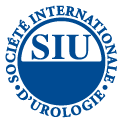CD34 and FSHR Expression to Differentiate Multiple Subtypes of Benign and Malignant Renal Neoplasms
Abstract
Background: Currently, no markers accurately differentiate benign from malignant renal masses. CD34 and FSHR
are transmembrane proteins involved in neo-angiogenetic pathways and are differently expressed in several normal
and cancerous tissues. However, little evidence exists on their distribution in different renal tumors. We aimed to
evaluate their expressions in various renal tumors and adjacent normal tissue.
Methods: We retrieved 810 histological samples from 26 patients who underwent surgery for suspected RCa. In each
case a core of 10 × 1 mm was selected perpendicular to the tumor capsule between normal kidney and tumor. Within
this core 30 regions of interest (ROI), each measuring 669 μm × 500 μm, were acquired at 20× magnification (n = 2
adjacent normal tissue; n = 2 tumor capsule; n = 26 tumor). The surface area of FSHR and CD34 immunostaining was
quantified in each ROI using number of stained pixels. The results were compared between RCa and normal kidney.
Results: Immunostaining was significantly different in normal, tumor capsular, and tumor tissues (both CD34 and
FSHR P < 0.0001), with overall highest expression in normal and lowest in tumor tissues, where CD34 and FSHR were
differently expressed amongst different tumor subtypes (both P < 0.0001). CD34 and FSHR were more expressed in
benign versus malignant (both P < 0.0001) and in chromophobe carcinoma versus oncocytoma tumor tissues (CD34
P = 0.0003; FSHR P < 0.0001). The discriminating ability of FSHR alone for benign versus malignant (AUC 0.805;
95% CI 0.771 to 0.837) and chromophobe carcinoma versus oncocytoma (AUC 0.973; 95% CI 0.939 to 0.991) was high.
In both cases FSHR AUC was significantly higher than CD34 (both P < 0.0001) and equivalent to the combination
of CD34 and FSHR (both P > 0.9). The correlation amongst levels of staining in tumor tissues and distance from the
capsule were overall weak (Spearman coefficient CD34 to 0.0644; FSHR-0.16322).
Conclusion: CD34 and FSHR are differentially expressed across renal tumor subtypes and between tumor and
surrounding tissues. FSHR expression alone may be a useful tool to differentiate benign from malignant tumors and
chromophobe carcinoma from oncocytoma
The Société International d'Urologie (SIU), which owns and publishes the Société International d'Urologie Journal (SIUJ), does not require authors of papers published in the journal to transfer copyright. Instead, we ask authors to grant an exclusive licence that allows us to publish the article in SIUJ (and any derivative or related products or publications) and that allows us to sub-license such rights and exploit all subsidiary rights.
Authors retain the right to use their own articles for their own non-commercial purposes without seeking explicit permission from SIU.
The SIUJ publication licence expressly defines “non-commercial” as “not primarily intended for or directed towards commercial advantage or monetary compensation.” Although no activity is completely disconnected from commercial activity, the following are generally considered to be non-commercial uses:
- Reproduction of a reasonable number (no more than 100) of print copies of the published paper for personal use (e.g., sharing with colleagues, including in grant applications).
- Posting a copy of the published version of the paper on the author’s own or their institution’s website. The article must be accompanied by this statement: ‘This article has been published in the SIUJ: [full citation; link]’.
- Inclusion of the paper in a course pack, with a maximum of 100 copies to be used in the author’s institution. The copies must include the following acknowledgement: ‘This article has been published in the SIUJ: [full citation; link].’
As the distinction between commercial and non-commercial is not always clear, authors are strongly advised to seek permission from SIU for any use that may be considered to have a commercial aspect.
We ask the corresponding author to read the terms of the licence and then to grant this exclusive licence on behalf of all authors by indicating agreement to the following statement:
The corresponding author has the right to grant on behalf of all authors and does grant on behalf of all authors, an exclusive licence on a worldwide basis to the SIU and its licensees to permit this article (if accepted) to be published in the SIUJ and any other SIU products and publications and to exploit all subsidiary rights, as set out in our licence agreement.
Review and Decision
Most submissions will be reviewed by a senior editor within 2 weeks. Many manuscripts will be rejected at this point for a variety of reasons, including subject matter outside the scope of the SIUJ, flawed design, discredited or outdated methodology, poor organization or presentation, failure to conform to ethical requirements, and apparent plagiarism.The remaining manuscripts will be sent for peer review. The SIUJ uses a single-blind process: reviewers know the identity of the authors, but the authors are not told who has reviewed their manuscript, and SIUJ ensures that potentially identifying information is removed from comments sent to them. Reviewers are asked to make their recommendations within 10 days, after which a senior/specialist editor will consider their comments and recommend provisional acceptance dependent on satisfactory revision, acceptance without revision, or rejection. Authors should receive a final decision within 4 to 6 weeks of submission.











